About Ikat | About Shibori | More Info
Ikat is a style of weaving where a resist dyeing process similar to tie-dye is used on either the warp or weft threads before they are woven to create a pattern or design. A double ikat is when both the warp and the weft yarns are tie-dyed before weaving.
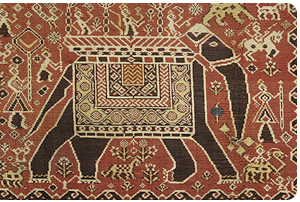
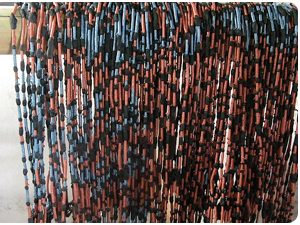 Photo Credit: Bianca
Photo Credit: Bianca
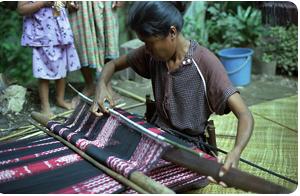 Photo Credit: Michel Coumans
Photo Credit: Michel Coumans
Ikat means "to tie" or "to bind" in the Indonesian language and has come to describe both the process and the cloth itself. The technique is used in cultures all over the world, in Central and South America, Uzbekistan, India, Japan and several South-East Asian countries. Double ikats are found in India, Guatemala, Japan and the Indonesian islands of Bali and Kalimantan (Borneo).
Ikats vary widely from country to country and region to region. Designs may have ritual meaning or may have been developed for trade. Ikats are symbols of status, wealth, power and prestige because of the difficulty and time required to make ikats. Some cultures believe the cloth is imbued with magical powers. Ikats created by dyeing the warp yarns are the easiest to make. Before the warp strings are attached to the loom they are strung between poles and arranged into bundles. Each bundle is tied and dyed separately, so that a pattern will emerge when the loom is set up. This takes a good deal of skill. The tightly bound bundles are sometimes covered with wax or some other material that will keep the dyes from penetrating like strips cut from plastic bags or plastic tapes. The process is repeated several times for additional colors.
Some patterns have many strands in the cloth that are all dyed the same way, which creates a blocky design. In some weaving traditions each strand of the cloth may be dyed differently from the ones next to it. Usually the pattern repeats in symmetrical or asymmetrical ways. To make elaborate patterns the weaver will still bundle and dye several threads together, but when the loom is prepared, a single thread will be used from each bundle for each section of the pattern. Elaborate ikat patterns like this are often handed down from generation to generation in the same family.
After the threads are dyed the loom is set up. The pattern is visible to the weaver when the dyed threads are used as warp and threads can be adjusted so that they line up correctly with each other as the warp is tied on to the loom. Some ikat styles (like in Japan and Guatemala) don't try to get the patterns precisely lined up, while in others (like in Timor in Indonesia) the patterns are so accurate, you have to look closely to determine that the pattern was not printed on the cloth.
Dying the weft yarns makes it much more difficult to make ikats with precise patterns. The weft is one continuous strand that is woven back and forth, so any errors in how the string is tied and dyed are very obvious. Because of this, weft ikats are usually used when the precision of the pattern is not the main concern. Some patterns become transformed by the weaving process into irregular and erratic designs. However, the precise images of Japanese ikats are often made from weft ikat when they are not double ikats.
Double ikats are the most difficult to produce. In the finest examples from India and Indonesia, the warp and the weft are precisely tied and dyed so that the patterns interlock and reinforce each other when the fabric is woven.
The most precise ikat is the Japanese Oshima - thrice-woven cloth. The warp and weft threads are used as warp yarns to weave stiff fabric, upon which the thread for the ikat weaving is spot-dyed. Then the mats are unraveled and the dyed thread is woven into Oshima cloth.
Today there are many takes on ikat, such as Featured Artist Jane Evans, who paints directly on the warped loom to achieve wonderful Impressionist feeling landscapes.
Shibori is a Japanese term for methods of dyeing cloth with a pattern by binding, stitching, folding, twisting, or compressing it - what we know as tie-dye. The English language does not have a word that encompasses all the techniques of shibori. Tie-dye simply covers binding methods of dyeing, known as bound resist. The earliest known example of cloth dyed with a shibori technique dates from the 8th century. The number of ways one can bind, stitch, fold, twist, or compress cloth for shibori is limited only by the imagination of the artist. Techniques used in shibori depend on the desired pattern and the characteristics of the cloth being dyed; different techniques can be used in conjunction with one another to achieve very elaborate results.
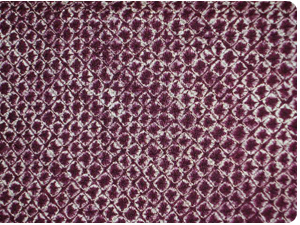
Kanoko shibori is what is commonly thought of as "tie-dye." It involves binding certain sections of the cloth to achieve the desired pattern. While traditional shibori requires the use of thread for binding, craftspeople in western civilization often use rubber bands. The pattern achieved depends on how tight and where the cloth is bound.
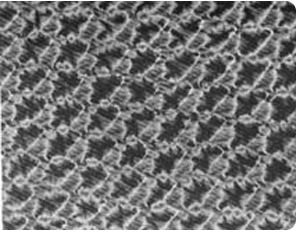
Muira shibori is also known as looped binding. It involves taking a hooked needle and plucking sections of the cloth and looping thread around each section twice. The thread is not knotted; the only thing that holds the sections in place is the tension from the thread. Because no knot is used, Muirea shibori is very easy to bind and unbind. Therefore, this technique is very often used. The final pattern is a water-like design.
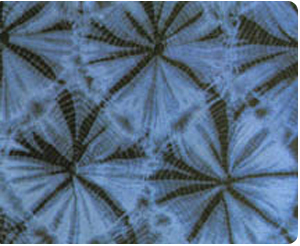
Kumo shibori is the process of pleating the cloth and then binding it in place. This technique must be done very finely and evenly to result in a very specific spider-like design.
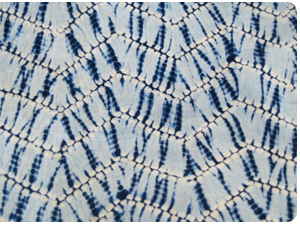
Nui shibori includes stitched shibori. A simple running stitch is used on the cloth then pulled tight to gather the cloth. The thread must be pulled very tight in order to work, and a wooden dowel must often be used in order to pull it tight enough. Each thread is secured by knotting before being dyed. This technique allows for greater control of the pattern and greater variety of pattern, but this technique is also very time consuming
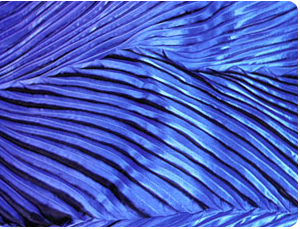
Arashi shibori is also known as pole-wrapping shibori. The cloth is wrapped on a diagonal around a pole. Then the cloth is very tightly bound by wrapping thread up and down the pole. Next, the cloth is scrunched on the pole. The result is a pleated cloth with a design on a diagonal. The name "arashi" comes from the Japanese word for storm. The patterns are always on a diagonal in arashi shibori, which suggests the driving rain of a heavy storm.
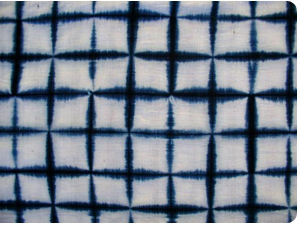
Itajime shibori
Itajime shibori is a shaped-resist technique. Traditionally, the cloth is sandwiched between two pieces of wood, which are held in place with string. Modern textile artists use shapes cut from acrylic or Plexiglas and hold the shapes with c-clamps, the acrylic pieces last longer than wood, which can warp over time. The shapes prevent the dye from penetrating the fabric they cover.
These are just the most common traditional styles of shibori. Modern shibori artists are constantly trying new techniques, materials, and tools. You are limited only by your imagination.
If you want to learn the basics and start creating your own vibrant shibori cloth, Shibori Designs & Techniques by Mandy Southan is a great resource.















